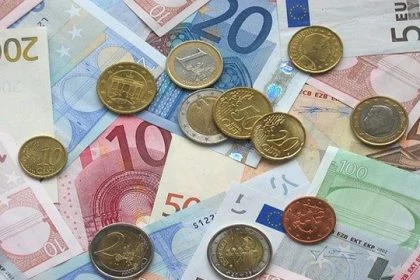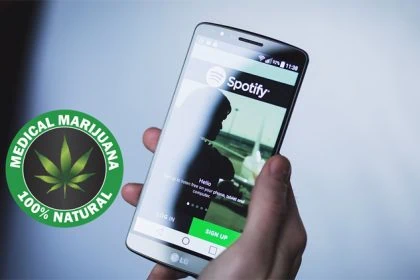In a trademark dispute before the European Court concerning the EU figurative marks Lloyd vs. Lloyd’s, the goods and services were compared. Does a common aesthetic function – as a contribution to the “look” – mean the similarity of goods? After all, in the fashion, accessories and perfumery industries, different goods are used in combination.

The focus of this case, which was decided by the European Court (CJEU) just before Christmas, was the comparison of goods and services and the similarity of goods. In October 2011, the intervener, Lloyd Shoes GmbH (Germany), had filed an application with the Office for Intellectual Property of the European Union (EUIPO) for registration of the figurative sign Lloyd as an EU trademark.
The applicant, El Corte Inglés, SA (Spain) – according to Wikipedia the largest chain of department stores in Europe in terms of turnover – filed a notice of opposition to the registration of that mark for all the goods and services claimed in the Nice classes, namely Classes 3, 14, 18, 25 and 35. Applicant El Corte Inglés relied on its own earlier EU figurative mark Lloyd’s, which also claimed similar goods and services in the Nice classes 3, 14, 18, but not for goods in class 25 (class 25: ‘clothing, footwear, headgear’).

The Opposition Division and also the Board of Appeal upheld the opposition in respect of Nice Classes 3, 14 and 18 and refused registration of the figurative mark Lloyd in those classes. However, both instances rejected the opposition to the registration of the mark in Classes 25 and 35. Registration could be granted for the sales services in Class 35 in so far as those services concerned, inter alia, some of the goods in Class 18 and the goods in Class 25.
Both parties disagreed with that decision of the Board of Appeal. The trade mark applicant, Lloyd Shoes, brought an appeal against the refusal of the trade mark application for all the Nice classes, and the applicant, El Corte Inglés, against the grant of the trade mark for the Nice classes 25 and 35.
Similarity of goods
Therefore the focus of this case before the European Court was the comparison of the goods and services. The applicant El Corte Inglés complained that the Office cannot refuse registration for Classes 3, 14 and 18 while at the same time allowing registration for Classes 25 and 35, and that the Board of Appeal therefore contradicted itself in comparing the goods and services.
According to the applicant, the specific characteristics of the fashion, accessories and perfumery sectors would lead consumers to use the various goods in combination, and because of their complementarity there was a link between all the goods claimed by Lloyd Shoes, the applicant claimed.
The Court
According to the case-law, in assessing the similarity of the goods or services in question, all the relevant factors relating to those goods or services should be taken into account, the Court recalled. Those factors include, inter alia, their nature, their end users and their method of use and whether they are in competition with each other or are complementary. Other factors, such as the distribution channels of the goods concerned, may be taken into account, the CJEU explained.
In this respect, the Court stated that goods and services may be considered complementary if there is a close connection between them in the sense that one is indispensable or important for the use of the other.
However, the applicant had essentially argued that, in the present case, there was an indirect similarity between the goods covered by the earlier mark and the sales services, the Court found.
Common function does not mean similarity of goods per se
The Court confirmed that goods such as shoes, clothing, hats or handbags may, in addition to their basic function, also have a common aesthetic function by contributing together to the external appearance (‘look’) of the consumer concerned (reference also to the 2007 judgment in PiraÑAM diseño original Juan Bolaños, EU:T:2007:219). However, the CJEU stated that this does not lead to the conclusion that goods are in principle similar by reason of a function that they can perform together. In the present case, however, the goods and services differ according to their nature, their intended purpose and their use, the CJEU ruled.
Interdependence in case of similarity of goods
In addition, the Court recalled the interdependence between the similarity of trade marks and the similarity of the goods or services covered. Thus, a lesser degree of similarity between the goods or services concerned may be offset by a greater degree of similarity between the marks, and vice versa, the CJEU held, as in other decisions.
Indeed, the applicant had also argued that, in the contested decision, the Board of Appeal had not taken sufficient account of the near-identity of the signs at issue when rejecting the idea of likelihood of confusion.
The Court rejected that complaint. An opposition must be rejected irrespective of the degree of similarity or identity of the signs in question where, as in the present case, the goods or services covered by them are different, the CJEU stated. In those circumstances, the Board of Appeal was right to conclude that there was no likelihood of confusion, the CJEU held, without having to take into account the alleged similarity or identity of the signs at issue.
The CJEU therefore dismissed the action and upheld the contested decision of the Board of Appeal.
Do you also want to protect or defend your trademark?
Our attorneys have many years of expertise in trademark law as well as patent law and are entitled to represent you before any court in Germany as well as internationally.
Please contact us if you are interested.
Sources:
Judgement of CJEU Lloyd vs Lloyd’s, EU:T:2019:889
Image:








Leave a Reply